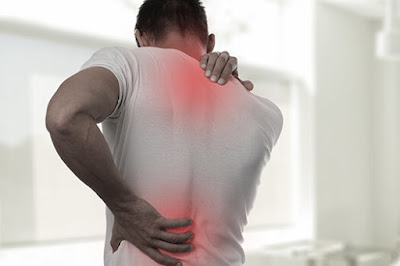3 Most Common Causes of Spasms in the Back
1. Anatomical Issues
When back spasms aren't going away with rest, physical therapy, and other attempts at conservative care, there may be an underlying anatomical source contributing to the problem. For example, degenerative disc disease (age-related disc wear), can cause spinal discs to become damaged enough to trigger the inflammation that often contributes to back spasms.If your discomfort is related to an anatomical issue, your back spasms are likely a reaction to the underlying problem. Should this be what's causing your symptoms, the source problem will need to be treated to experience lasting relief. Additional anatomical issues that could lead to involuntary soft tissue contractions around your spine include:
- Disc herniation
- Vertebral slippage (spondylolisthesis)
- Spinal narrowing (spinal stenosis)
- Facet joint osteoarthritis
2. Soft Tissue Injuries
Injuries to muscles, ligaments, or tendons around the lower back area
can irritate the affected soft tissues enough to trigger back spasms. Soft
tissue injuries can also result from hard falls or impacts while playing sports
or straining the back-supporting muscles while lifting something heavy.
Repetitive motions made while cleaning the house, performing
work-related duties, or playing contact or movement-based sports can also lead
to soft tissue injuries and back spasms. Fortunately, injuries to soft tissues
often go away within a week or so with conservative care that includes:
- Resting for a few days*
- Anti-inflammatory medications
- Controlled/therapeutic exercise
- Gentle stretching or massage therapy
- Temporary use of a soft brace to prevent excess movement
3. Muscle Fatigue and Dehydration
Muscle fatigue refers to a decreased ability of a muscle to generate
force. It may occur when you overexert yourself while exercising and your
muscles become tired, painful, and weak. Overstressed muscles go into a
hyperactive state, which is what can cause painful muscle contractions. A
hyperactive muscle state can also be triggered because of a significant loss of
fluid, which is needed to facilitate normal muscle movement.
Taking a break from strenuous activities or exercise until your muscles recover and drinking more water may ease discomfort. However, the time it takes for the affected soft tissues to heal depends on how long they were overstressed or dehydrated. Muscles around the spine may also become fatigued or dehydrated for the following reasons:
Taking a break from strenuous activities or exercise until your muscles recover and drinking more water may ease discomfort. However, the time it takes for the affected soft tissues to heal depends on how long they were overstressed or dehydrated. Muscles around the spine may also become fatigued or dehydrated for the following reasons:
- Lactic acid-induced muscle fatigue - Caused by a reduced oxygen supply to muscles that increases the production of lactic acid—a waste product associated with muscle fatigue and pain.
- Mineral deficiencies - When muscles aren't getting a steady supply of minerals and electrolytes, the result is sometimes unexpected muscle fatigue. Adding more nutrient-rich foods to your diet may prevent this problem.
- Failure to warm up/stretch - Regardless of what shape you're in, your muscles need to be properly warmed up or stretched before you do any strenuous exercises or activities to keep your muscles flexible and loose.
With back spasms that only occur after overdoing it at the gym or spending
hours sitting in the same position, the likely cause is temporary muscle
irritation. However, if you’re having severe pain that's extending to nearby
areas or frequent back spasms, it's time to get a proper diagnosis from your doctor
or a Los Angeles spine
surgeon. Taking this step can also allow you to focus on treatments and
preventative measures that are more likely to be
effective. To schedule an appointment at The Spine Institute, call 310-828-7757
today.

Comments
Post a Comment